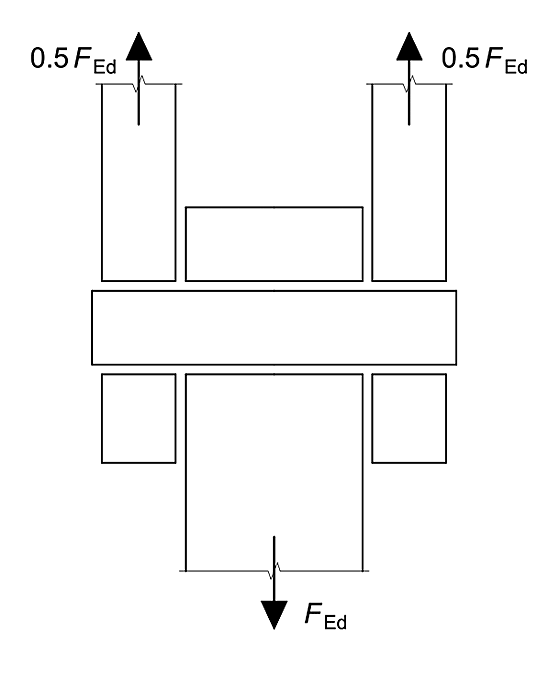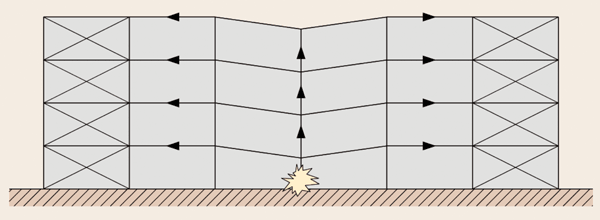Technical
AD 371: Design of cold-formed steel trapezoidal sheeting
Load/span tables provided by manufacturers are often used for the design of cold-formed steel trapezoidal profile sheeting (commonly referred to as decking). One question that is frequently asked of the Advisory Desk, about such tables, is: “Why is the load carrying capacity of a single spanning system greater than that of a double or multi-spanning system? Intuitively, double or multi-span system should provide better structural performance.” This Advisory Desk Note provides guidance to explain the reasons why this intuitive assumption is not always correct.
Cold-formed steel trapezoidal sheeting is commonly used in buildings for wall/roof cladding and floor decking. The sheeting provides resistance to transverse loading (wind loads and imposed loads) and is supported by secondary steelwork (rails/purlins or floor beams). Typically, the sheeting is supported as single spans, double spans or multiple spans, depending on the building dimensions and configuration of the main frame.
The evaluation of cold-formed steel trapezoidal sheeting is normally in accordance with BS EN 1993-1-3:2006 and includes assessment of:
- The bending resistance and shear resistance of the cross section at ULS
- The local resistance of the web of the profile at ULS (i.e. the resistance to crushing, crippling and buckling of the web).
- The combined effects of bending moment and shear at ULS
- The combined effects of bending moment and local transverse force at ULS
- Deflection (sometimes called “Inertia” in load/span tables) at SLS
For single spans, the governing design criterion is generally either the bending resistance of the cross section at ULS or the mid-span deflection at SLS. For longer spans, deflection is commonly the governing criterion.
For double and multi-span configurations, the governing criterion is usually the combination of effects at an internal support.
Since different failure modes govern, it is possible that under some loading conditions, a double or multi-spanning system does not necessarily offer an increased capacity compared to a single span system.
Contact: Ed Yandzio
Tel: 01344 636525
Email: advisory@steel-sci.com












